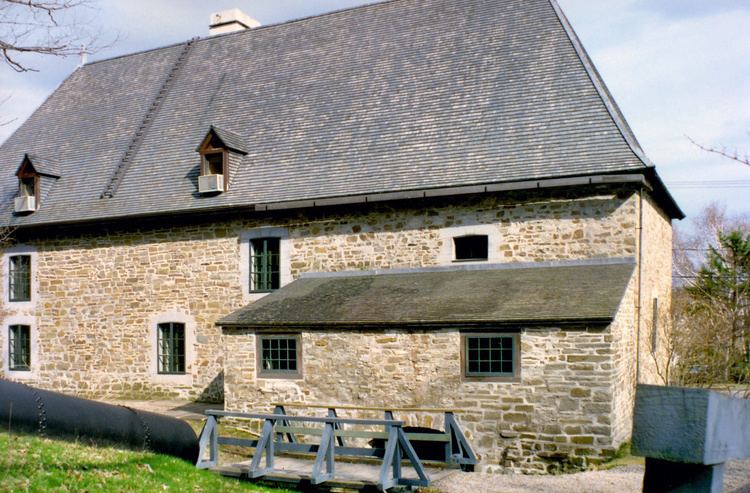Province Québec | Phone +1 418-824-7007 | |
 | ||
Address 7007 Avenue Royale, Château-Richer, QC G0A 1N0, Canada | ||
Le moulin du petit pr vendu un entrepreneur priv
Moulin du Petit-Pré also known as Moulin de Monseigneur-de-Laval is a water-powered flour mill in Château-Richer, Quebec, Canada on the north shore of the St. Lawrence river about 20 kilometers northeast of Quebec City, and is the oldest commercial flour mill in North America. The mill was built for the Seminary of Quebec under the auspices of Bishop François de Laval. Construction began in 1691 and was completed by 1695.
Contents
- Le moulin du petit pr vendu un entrepreneur priv
- Under French control
- Under Canadian control
- Modern history
- Current use
- References
At various times in its more than 300-year history, the mill has been used to grind wheat, mill lumber, and cord wool. It was damaged or destroyed by fire three times, and has not been operational since the early twentieth century. The mill currently serves as a cultural and historical landmark in Quebec.
Under French control
The mill was constructed between 1691 and 1695 by Charles Pouliot, and was used to grind wheat into flour for local merchants in the Quebec City area, deriving its power from the Petit-Pré river near where it joins the St. Lawrence river. Jean Richard was the mill's first miller. A fire in 1702 damaged the building, but was repaired four years later, restoring the original milling capacity. Several repairs and improvements were made to the mill between 1732 and 1744, including the expansion of the building in 1742 to accommodate a third feed mill.
In 1759, the mill and other structures along the Beaupré coast were burned by the British General James Wolfe's soldiers during the Siege of Quebec. The Jesuits rebuilt the mill over the next five years, including installing two new feed mills. Much of the repair cost was paid for by Antoine Nadeau who had leased the mill since 1757.
Under Canadian control
In 1778 a third feed mill was installed by the seminary. In 1810, Charles Bélanger obtained permission from the seminary to add a saw mill to the structure. Construction of the saw mill was completed in 1819. Several years after Quebec abandoned the seigneurial system, the mill was adapted for the additional function of carding wool by Joseph Joseph Coté.
In 1871, the seminary sold the combined saw mill, flour mill and carding mill to George Benson Hall. Fire again destroyed the mill six years later and is immediately rebuilt with an updated turbine to replace the antiquated water wheel. In 1877 the mill is sold to Richard Temblay, who in 1889, gives it to his son, Richard. In 1897, the mill is again sold, this time to Zoé Richard (née Turgeon). Her daughter in turn inherited the mill in January 1925.
Modern history
In 1944, Château-Richer Cooperative assumed ownership of the mill until it was purchase by Pierre Jobidon in 1965. A year later, the Ministry of Cultural Affairs purchased the mill. In the 1970s, archaeological excavation aided in the partial restoration of the mill to its appearance around the time of its original construction. Ultimately, the mill restored to its appearance in 1763.
In 1982, the mill housed a few municipal government offices as well as the Ministry of Cultural Affairs cultural center. Ownership again transferred in 1995, to Gestion Promiel Inc. de Château-Richer. In 2002, additional restoration work was undertaken by the Corporation pour la mise en valeur du Moulin du Petit Pré, restoring the mill to its current state.
Current use
Since 2003, the mill has served as a small cultural history museum and is open to visitors. The center has a bistro, reception hall and hosts various community cultural events.
